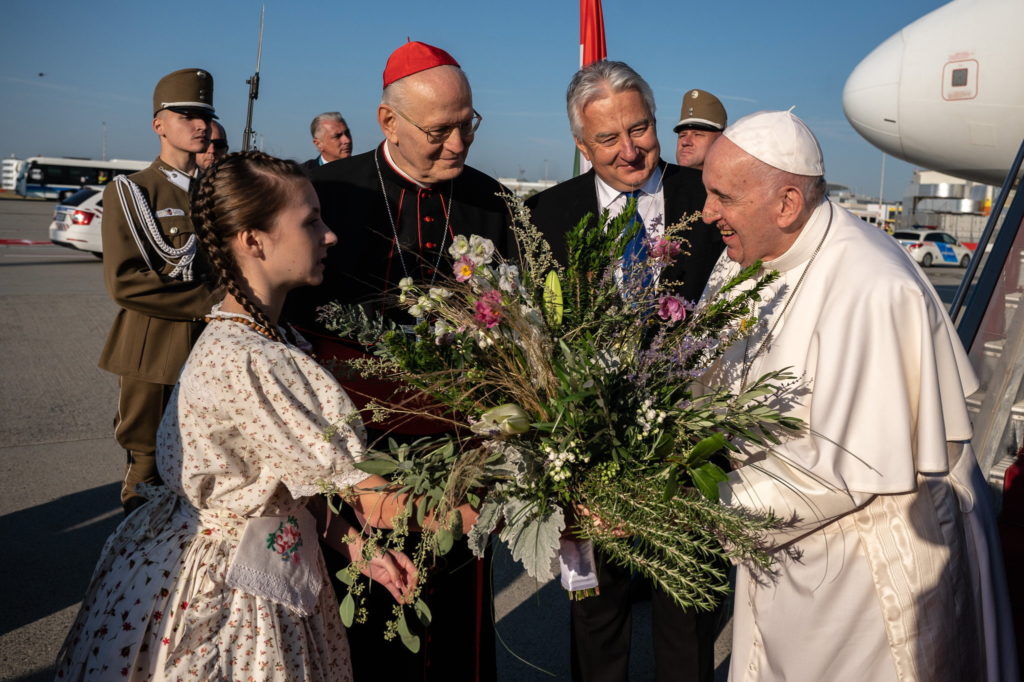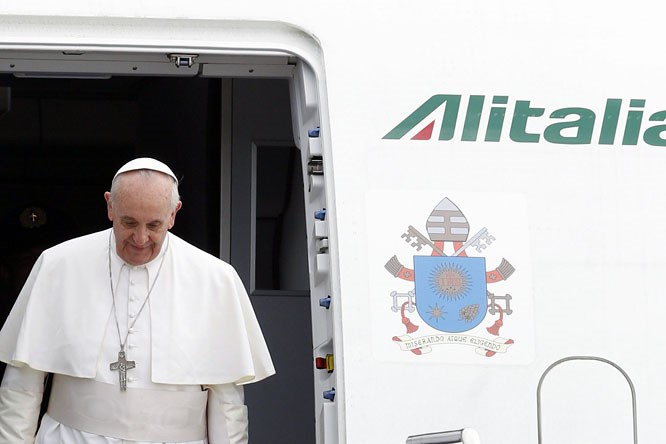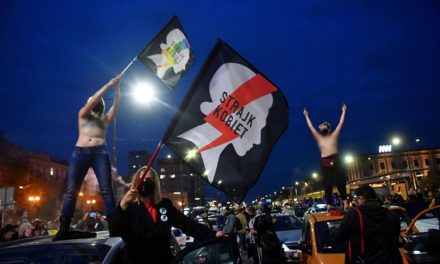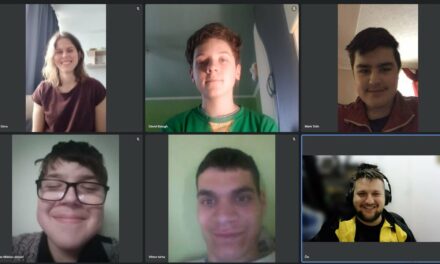Pope Francis arrived in Budapest a short time ago. Deputy Prime Minister Zsolt Semjén, Cardinal Péter Erdő, as well as several church and public figures appeared to receive him at the airport.
As usual, Pope Francis, who arrived in the capital for the closing mass of the 52nd International Eucharistic Congress, set off on his 34th trip abroad with an Alitalia plane and a large press entourage. The Holy See's spokesperson called the head of the church's visit a "spiritual pilgrimage in the heart of Europe".

Pope Francis is greeted with a bouquet of flowers at Liszt Ferenc Airport. In the middle are Cardinal Péter Erdő, Archbishop of Esztergom-Budapest (b) and Deputy Prime Minister Zsolt Semjén. MTI/Koszticsák Solid
This will be the head of the Catholic Church's second foreign trip since the start of the coronavirus pandemic last year. In February of this year, Pope Francis visited Iraq for three days, and since then he has not left the Vatican.
The current trip to Budapest and then to Slovakia is the 34th foreign trip of the Pope, elected in 2013.
Holy See spokesman Matteo Bruni reminded at the press conference leading up to the visit that Pope Francis is the second head of the Church to travel to Budapest and Slovakia: the first was Pope II. Pope John Paul II visited Hungary in August 1991 and in September 1996. The spokesperson drew a parallel between the current visit and the 1991 visit, emphasizing that the Polish Pope arrived in Hungary from the shrine of Czestochowa then, while Pope Francis went on from Budapest to the similar pilgrimage site of the Virgin Mary in Sasvár, Slovakia, from where the Hungarian Paulists were forced to move throughout history. to Czestochowa. The Holy See's spokesman said that Pope Francis' trip is "a spiritual pilgrimage in the heart of Europe".
The spokesperson emphasized that with the visit, the Pope wants to remember the history of faith and resistance in that part of Europe, where bishops, priests and believers were deprived of their freedom or even their lives in defense of their faith, religion and freedom. Matteo Bruni was among the first to name Cardinal József Mindszenty, whose heroic virtues were recognized by Pope Francis in February 2019.
As usual, Pope Francis took off from the Rome airport on an Alitalia plane, according to flightradar, at 6:10 a.m., which is the earliest time in the history of papal trips. Since 1964, the airline has provided a special plane for the various papal trips. The plane is being transformed according to the needs of the heads of the church, Pope Francis and his Vatican entourage take seats in the first half of the plane, and representatives of the press in the other part of the plane.
As usual, the Pope is accompanied by Cardinal Pietro Parolin, Secretary of State of the Holy See, Archbishop Paul Richard Gallagher, Vatican Secretary of State, other cardinals and bishops, the Pope's close colleagues and assistants, including his personal physician.
All trips take place according to a precise scenario and protocol: the Vatican masters of ceremonies took part in the preparation of the church events, and the security of the locations was also assessed in advance by members of the Vatican gendarmerie, who serve in civilian clothes. An essential accessory for papal visits is the papal mobile, or any other open and white vehicle, with which the head of the church greets the faithful before or after mass. According to press reports, the papal mobile used in Hősök Square made its way from the Vatican to Budapest by truck.

Pope Francis will arrive at Ferenc Liszt Airport on September 12, 2021. The head of the Catholic Church arrived in Budapest for the closing mass of the 52nd International Eucharistic Congress (NEC). The so-called statio orbis, i.e. the Holy Mass presented for the city and the world, which closes the congress, is traditionally the most solemn event of the Catholic event series. From the left, Cardinal Péter Erdő, Archbishop of Esztergom-Budapest (b) and Deputy Prime Minister Zsolt Semjén (b2). MTI/Koszticsák Solid
Source: MTI












